EVENING ON THE MEADOW NEAR VALTURA
Today I spent most of my time at home. In front of the PC screen. Busy sorting and preparing the photographs for future posts. But I went on a little outdoor excursion in the evening.
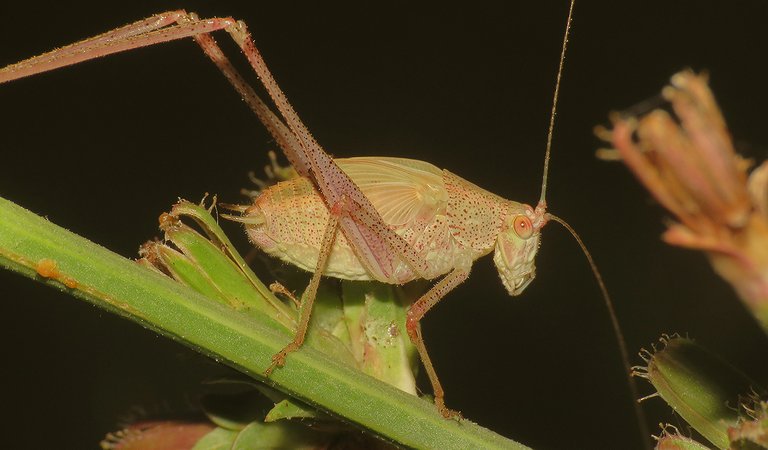
I drove nine kilometers to the village of Valtura and stopped by the side of the road a kilometer or two further. The bushcricket in this opening picture was photographed at the end of the evening walk when the night was almost there, and I was ready to go home. In the following photograph ...

... you can see my first encounter. The Mylabris variabilis. A beetle from the Meloidae family.

Meloidae are commonly known as Blister beetles. I'm not sure if all species from this family use a defensive secretion based on cantharidin, a toxin that causes burns and blisters on the skin and is very poisonous when ingested in bigger doses. Most of them surely do. But this one, I don't know. I never had problems holding these insects in the palm of my hand.
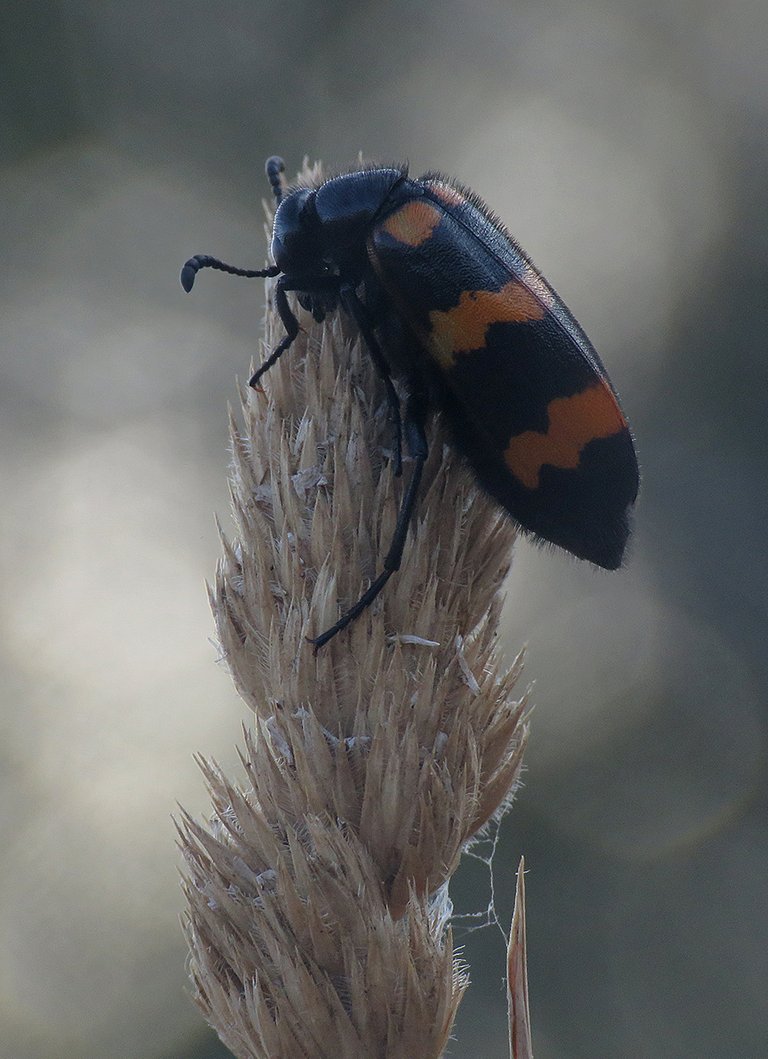
Here you can see the same beetle but the light and background are slightly different.

Here you can see a group of colorful shield bugs.

Eurydema ornata is the name of the species. The family is Pentatomidae.
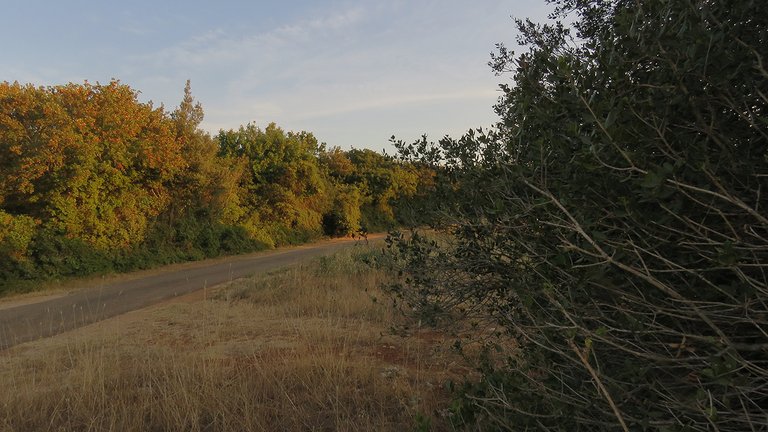
Here you can take a wider look at the meadow by the side of the road.

Behind the first line of shrubs around the meadow, I found this pretty large rock. It looked pretty cool, so I photographed it.

Here you can see another wide shot that shows the setting and the evening atmosphere. The plant in the foreground is the Carthamus lanatus.
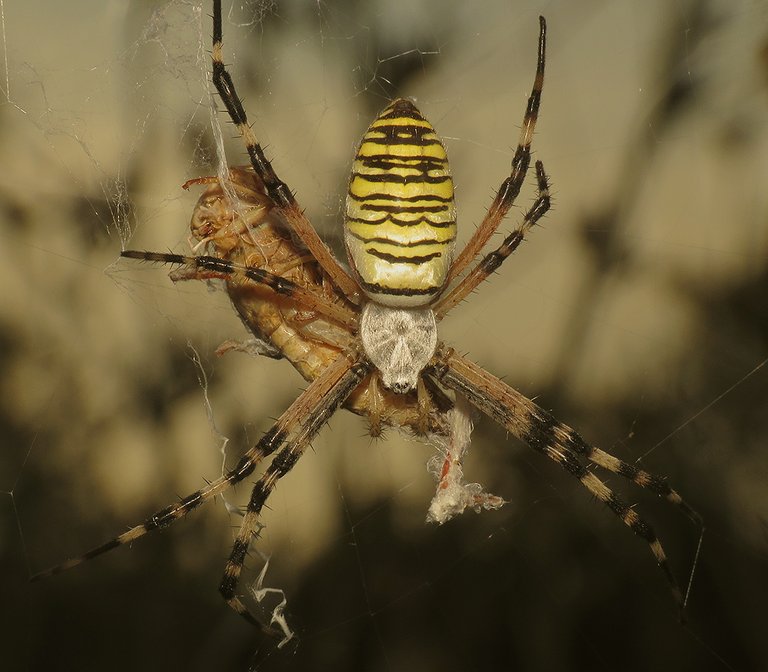
As the sun was getting lower, I came across the Argiope bruennichi spider that has caught a grasshopper.
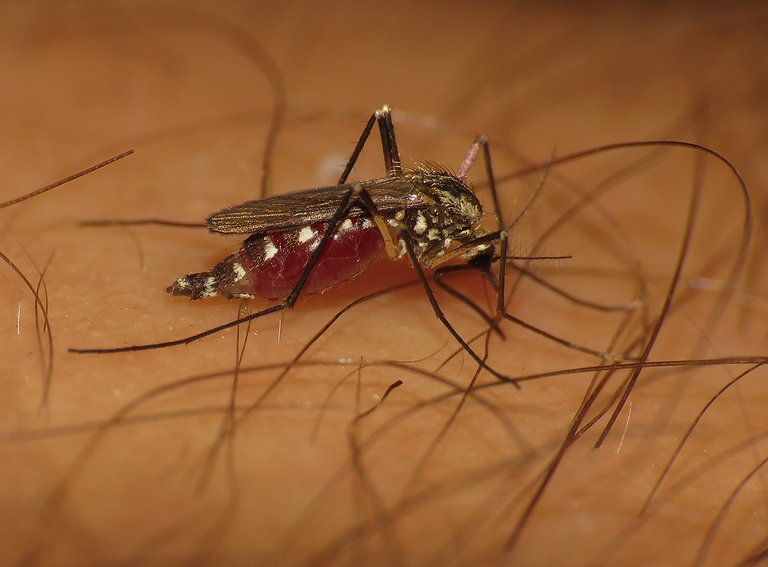
While I was photographing, mosquitoes were feeding on my blood.

The light was very low when I found a group of crickets ...
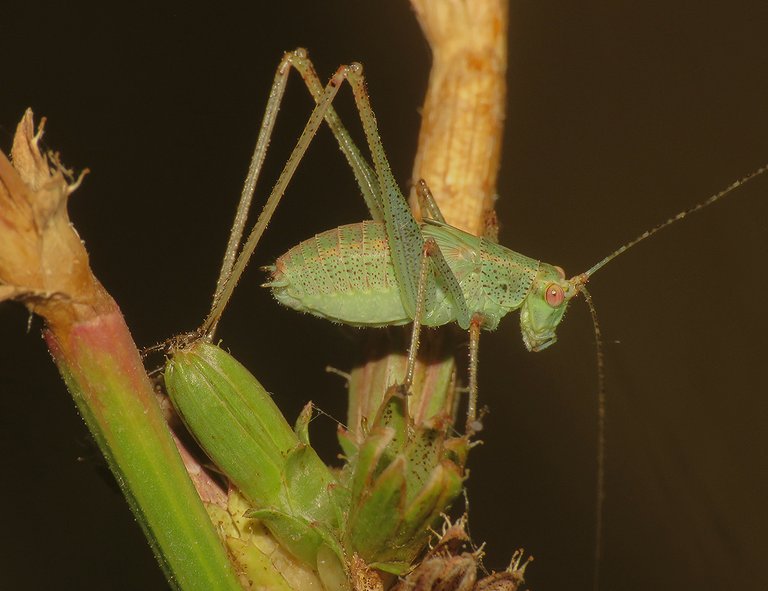
... on the Cichorium intybus plant.

These are all nymphs of the Phaneroptera nana bushcricket.
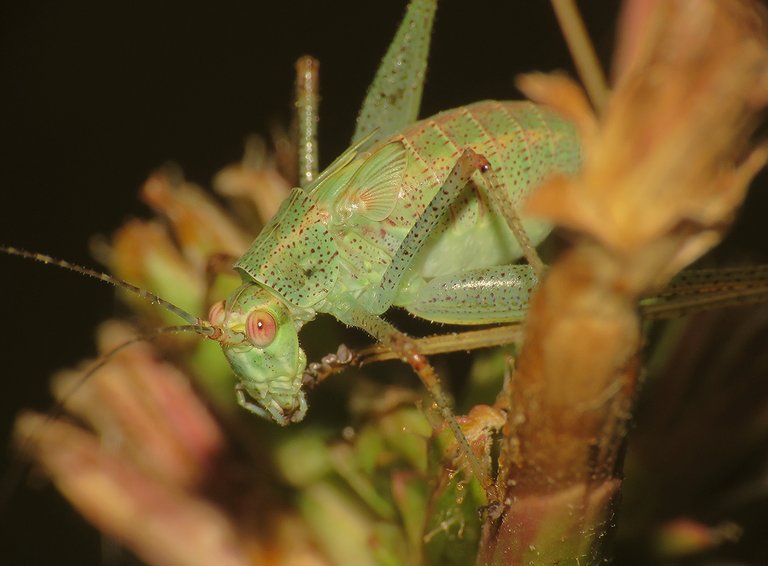
As you can see ...
... the color in nymphs can vary.

The adults are always green.
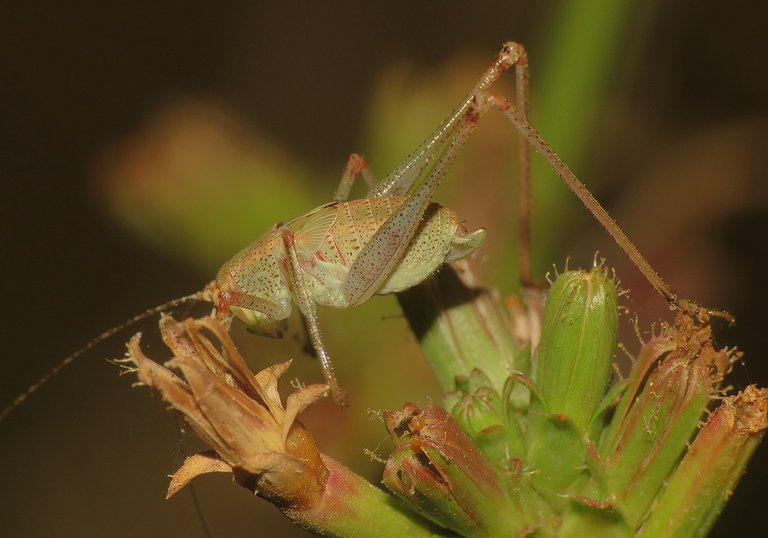
I didn't see any adult Phaneroptera nana today.
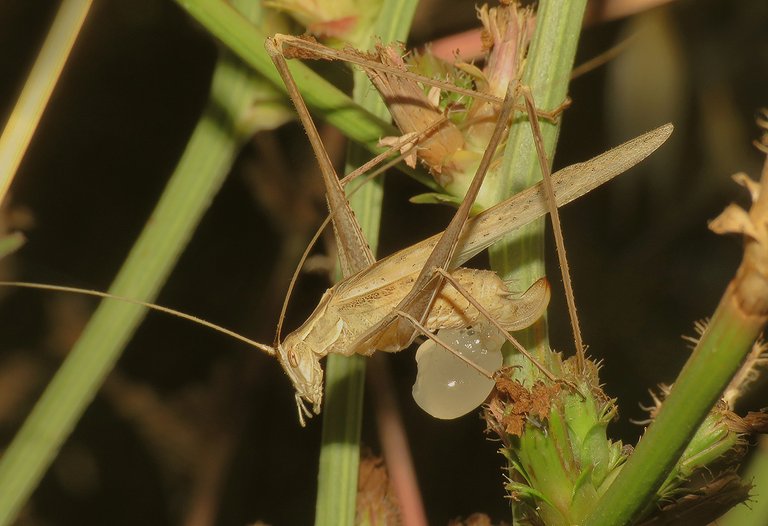
But I found an adult of another species.
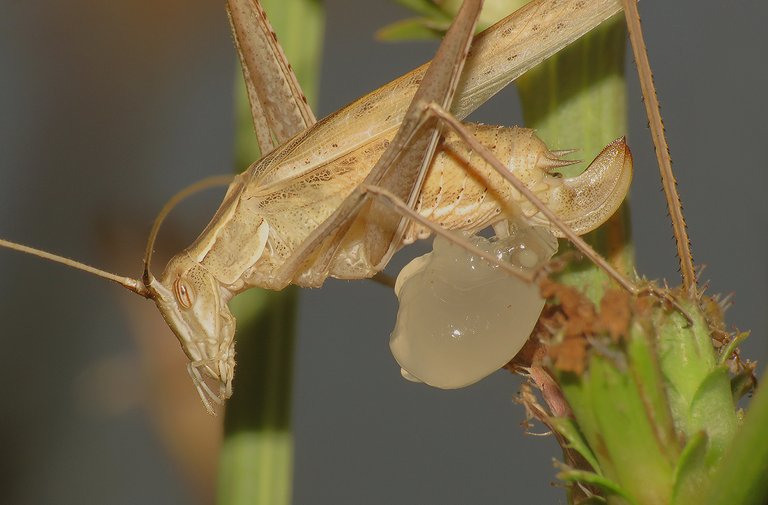
The Tylopsis lilifolia. This is the female. The gelly-like stuff on its abdomen is a nuptial gift from a male. The nutrient secretion is usually given during mating.
The following links will take you to the sites with more information about the protagonists of this post. I found some stuff about them there.
https://en.wikipedia.org/wiki/Tylopsis_lilifolia
https://www.sciencedirect.com/science/article/abs/pii/S0003347213001607
https://www.inaturalist.org/taxa/132070-Phaneroptera-nana
https://en.wikipedia.org/wiki/Mylabris_variabilis
https://www.britishbugs.org.uk/heteroptera/Pentatomidae/Eurydema_ornatum.html
AND THAT'S IT. AS ALWAYS IN THESE POSTS ON HIVE, THE PHOTOGRAPHS ARE MY WORK - THE END.

Nice insects photography.
Do you use a tripod or shoot from hands?
The insect photographs are most valuable along with the description of the species.
!WINE
Congratulations, @valerianis You Successfully Shared 0.100 WINEX With @borjan.
You Earned 0.100 WINEX As Curation Reward.
You Utilized 1/1 Successful Calls.
Contact Us : WINEX Token Discord Channel
WINEX Current Market Price : 0.168
Swap Your Hive <=> Swap.Hive With Industry Lowest Fee (0.1%) : Click This Link
Read Latest Updates Or Contact Us
Mostly from hands. Sometimes I put the camera on the ground or on something improvised with pieces of wood or stones to get a long exposure shot. I don't have a tripod.
European crickets look more like locust, thus some of them also fall into locusts category. Asian locusts are mostly short legged specially hind legs are not that long as their European counterparts.
We also have a version of Blister bugs either striped or black in color, I haven't seen one in years, they don't appear in cities.
The male of Tylopsis lilifolia seemed very horny and drained all his horniness on the female. lol
The mosquito looks enjoying your body fluids, but this one is aedes albopictus famous for dengue fever virus.
Well, all the images captured in the low light looks more detailed and superb.
!PIZZA
PIZZA Holders sent $PIZZA tips in this post's comments:
@emaxisonline(3/5) tipped @borjan (x1)
Learn more at https://hive.pizza.
@tipu curate 🌱
Upvoted 👌 (Mana: 36/46) Liquid rewards.
Nice pictures!
Thanks for your contribution to the STEMsocial community. Feel free to join us on discord to get to know the rest of us!
Please consider delegating to the @stemsocial account (85% of the curation rewards are returned).
Thanks for including @stemsocial as a beneficiary, which gives you stronger support.
Congratulations @borjan! You have completed the following achievement on the Hive blockchain and have been rewarded with new badge(s):
You can view your badges on your board and compare yourself to others in the Ranking
If you no longer want to receive notifications, reply to this comment with the word
STOPCheck out the last post from @hivebuzz:
It’s very nice to be able to drive to nature not far away! Then you could be among wild weeds and flowers with all the strange insects!
You should find the hiding place of those UFOs one day! Then you’ll have really strange photos!🙀😂
🙂
Congratulations, your post has been upvoted by @dsc-r2cornell, which is the curating account for @R2cornell's Discord Community.
In your post I see the virus that causes dengue, a disease that if not attacked in time can cause death, well, the poor animal does not know this, we humans are the ones who must take care of ourselves.
I wish you a happy start of the week
You spend every day just to get these cute animals, even though in my area various types of animals like this are very easy to get but I have to try them
The meadow may look empty with a wider view however, your detective's eyes found these amazing insects. You did great capturing the clarity of the details on these creatures. I hope to see these photos in LIL Gallery soon ;)
Hi @borjan
Friend, I congratulate you for the pot and the excellent photos you managed to capture, they connected me with your passion for nature.
We appreciate your work and your post has been manually curated on behalf of Insects Of The World Community. It will be added to the weekly curation report. Keep up the good work.
Thank you 🙂